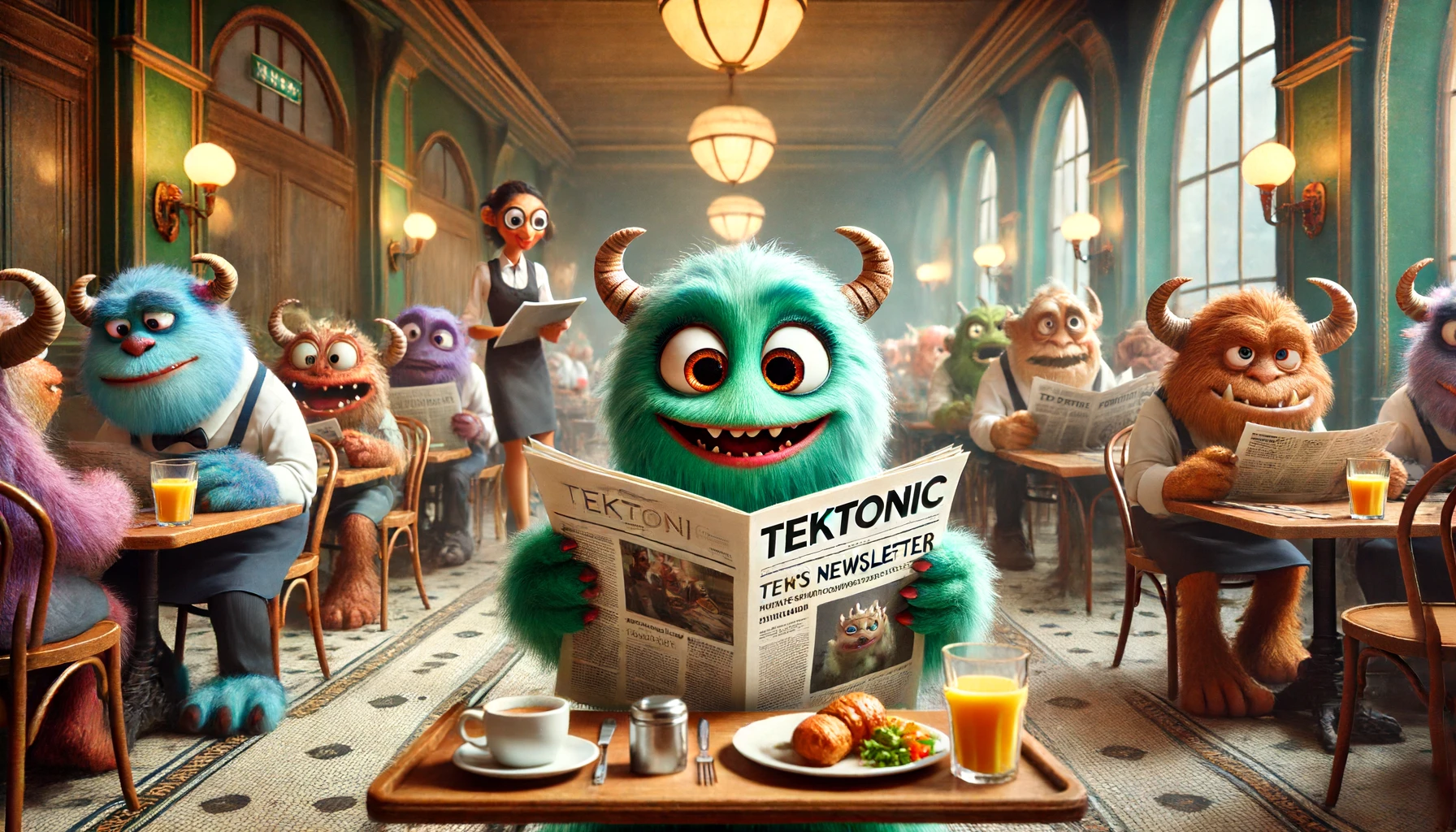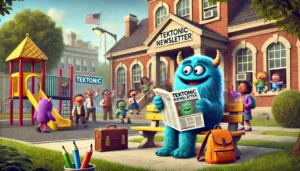This week’s TekTonic dives into news of advancements in AI and technology, highlighting significant stories. The landscape is rapidly evolving from Apple’s underwhelming AI unveilings at WWDC to OpenAI’s impressive financial growth and strategic board additions. Noteworthy developments include Shreds’ promising coding automation technology, Lumn Labs’ Dream Machine outpacing OpenAI’s Sora, and the legal implications of an AI-assisted mayoral candidate in Wyoming. We also explore innovations in healthcare with AI-driven cancer detection tools, the rise of interactive AI in classrooms, and the impact of AI on market stability and legal frameworks.
The most widely covered AI story this week was undoubtedly Apple’s WWDC conference, where it unveiled an anticipated host of underwhelming AI technologies. The media coverage was supportive, but most tech enthusiasts thought it was “meh.” My favorite stories of the week didn’t seem to make the major newsfeeds. These include the announcement of Shreds, a company that claims it has technology that can automate 80% of the code needed for complex software with virtually no errors. But the biggest was the release of Luma Labs Dream Machine. This is significant because it beat the much-hyped OpenAI Sora to market, lagging by only a week to China’s Kling. This miss by OpenAI makes many wonder if OpenAI bit off more than it can chew with its uncompensated Apple relationship.
Other notable, albeit random, stories of the week were the news of edible computing, news that GPT-4 surpasses humans in Theory of Mind needed for AGI, a story revealing Nvidia’s employees are worth $100 million each, and Stability AI’s newly released SD3 image generator is suffering from the same problems Google experienced earlier this year due to oversensitive algorithms.
This week saw significant developments, starting with an announcement from OpenAI. The company has doubled its annual revenue to an impressive $3.4 billion and expanded its lobbying efforts to influence global regulation. OpenAI has added former NSA chief Paul Nakasone to its board, marking a significant step in the intersection of AI and national security and softening the public negative perception based on recent OpenAI departures. Meanwhile, Amazon’s aspirations for a super-intelligent Alexa have hit a snag. Despite ambitions to compete with leading AI models like OpenAI’s GPT-4, Amazon reportedly struggles with data and resources.
In a significant social and cultural development, the Pope made his first-ever discussion about AI at the G7 summit. This event was notable for its content and became a viral sensation, with the ‘Balenciaga Pope’ meme circulating widely.
In tech advancements, researchers from North Carolina State University have developed a new AI method that significantly improves 3D mapping using less power. This innovation promises to revolutionize industries reliant on spatial data, from autonomous driving to virtual reality, by making these technologies more efficient and accessible without the need for expensive supercomputing.
On the legal front, the Supreme Court is set to hear Facebook’s bid to dismiss a shareholder lawsuit over the Cambridge Analytica scandal. This case remains central to the ongoing debate over data privacy and corporate accountability. Additionally, the legal sector is seeing a surge in AI integration, with startups like Alexi securing significant funding to advance AI-powered legal technologies, promising to transform how legal services are delivered just as half of all lawyers want self-regulation for AI. (really?)
In cybersecurity, new products unveiled by Criminal IP are set to enhance fraud detection capabilities, a critical development as cyber threats continue to evolve. Similarly, a critical flaw discovered in PyTorch’s distributed RPC system has raised concerns, emphasizing the constant need for caution in AI system security.
Shifting to hardware, AMD’s Instinct MI300X has been revealed as the fastest GPU in the Geekbench OpenCL benchmark, outpacing NVIDIA’s RTX 4090 by 19%. This leap in performance is a testament to the back-and-forth competition between brother and sister CEOs.
Apple’s Worldwide Developers Conference showcased their new AI initiatives, including introducing Apple Intelligence for iPhones and Macs. This move towards integrating generative AI with a strong focus on privacy highlights Apple’s commitment to staying competitive in the AI landscape while addressing user concerns about data security. By the way, Elon Musk was not impressed by Apple’s new AI initiative and threatened to ban the new devices from his company.
In education, a new survey reveals that AI usage in classrooms has surged since the start of the school year. Interactive AI teachers, like Iris, are enhancing classroom learning and communication skills by taking attendance and addressing student queries while terrifying students who are forced to take photos for the website (take a look LOL).
Shifting to politics, the legality of an AI-assisted mayoral candidate in Wyoming has sparked legal questions, highlighting AI’s growing integration into governance and its potential challenges. Meanwhile, California’s transportation department awarded its first generative AI contract, marking a historic moment for the state as it embraces AI for improving infrastructure planning and management.
The business sector also saw significant movements. Financial regulators have been criticized for insufficient oversight of hedge funds’ use of AI, raising concerns about market stability. Meta is undergoing major restructuring with plans to lay off vice presidents, reflecting tech companies’ intense pressure to streamline operations and improve profits. OpenAI continues its expansion by welcoming Sarah Friar as CFO and Kevin Weil as CPO, solidifying its leadership team to further its mission of conducting world-leading AI research and product deployment.
In the world of robotics, Navia Robotics, and Nuwa Robotics unveiled Collibot, a groundbreaking service robot designed to increase automation and elevate customer service across various industries. Researchers at the University of North Carolina at Chapel Hill have also made strides by creating skin-inspired sensory robots capable of providing medical treatment, demonstrating the innovative applications of robotics in healthcare. And HuggingFace announced their DIY open-source robot Reachy2 just in time for the holiday marketing season.
The media and entertainment landscape is evolving, with YouTube testing untrackable ads to bypass ad blockers. Additionally, TikTok is challenging Google’s search dominance with a new image search capability linked to its e-commerce platform, illustrating the shifting dynamics in the digital marketplace and not for just travel.
Healthcare continues to be a hotbed of AI innovation. A new AI tool has been developed to accurately detect six cancer types on whole-body PET/CT scans, promising to revolutionize early cancer detection and treatment. Providence and Microsoft are collaborating on AI tools to sift through vast amounts of patient data, aiming to deliver personalized and precise treatments faster. Even more important, it was reported this week that Providence developed an AI tool in just 18 days, demonstrating a growing trend for companies to build their solutions rather than wait for vendors to bring them to their attention.
Finally, Binance Labs has invested in Zircuit’s AI-powered blockchain security in the crypto and blockchain, reflecting the increasing focus on enhancing blockchain reliability and efficiency. Meanwhile, AI-linked crypto tokens have underperformed following an unimpressive Apple event, demonstrating the volatile nature of the crypto market and AI’s influence.
That is it. Stay tuned for more news next week. I APPRECIATE ALL THE READERS. Help spread the word. I put these newsletters together so productive humans like you can stay on top of the latest AI stories shaping our world.
If you like these weekly tech news reports, subscribe to get notified of new editions and updates. For daily updates, you can check out our news page. Or, for a more in-depth analysis of the week’s news, sign up to receive our free weekly newsletter located to the right of the daily news or follow me on Twitter or YouTube.



